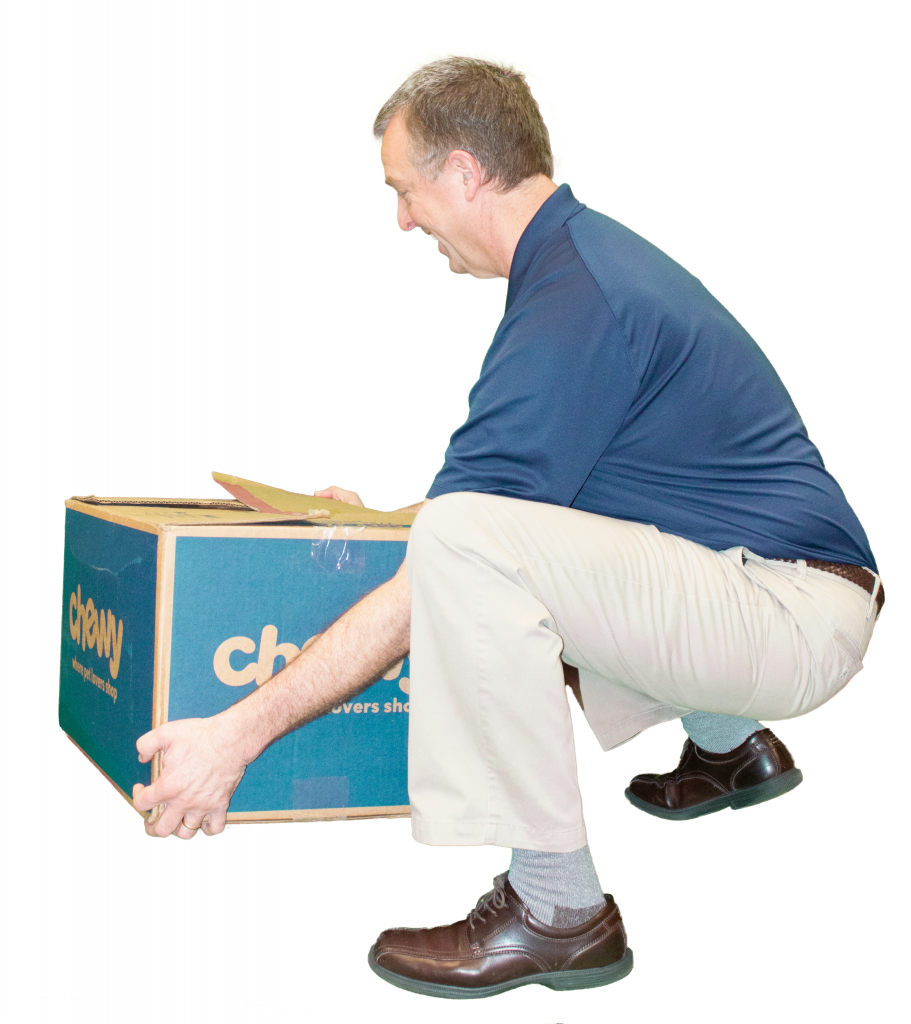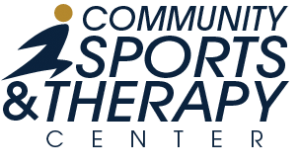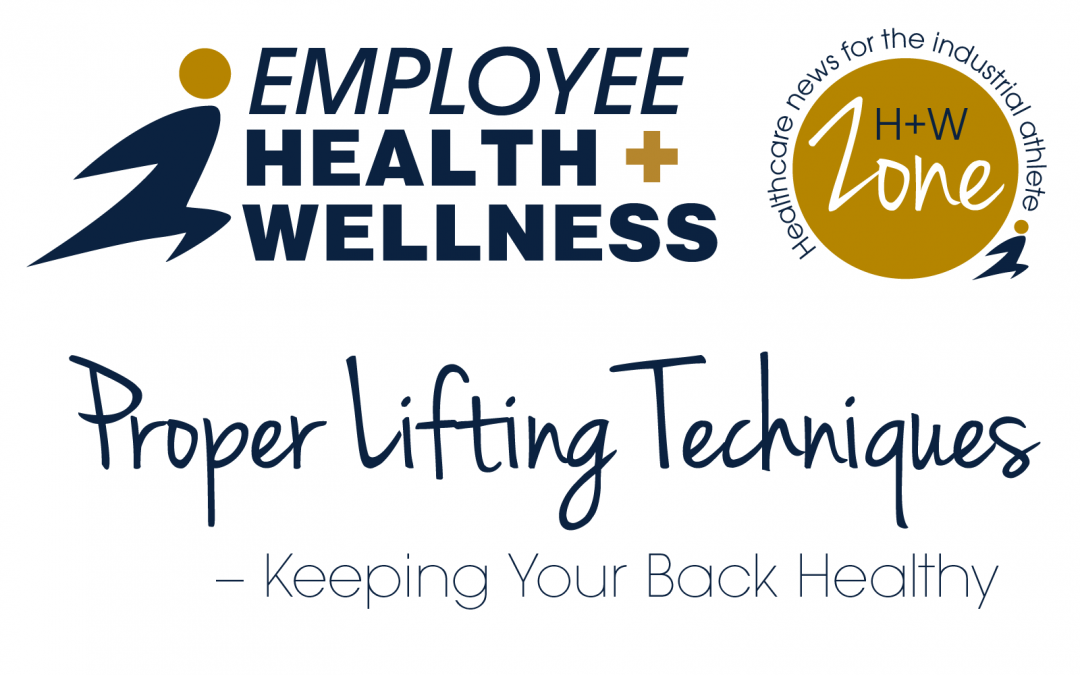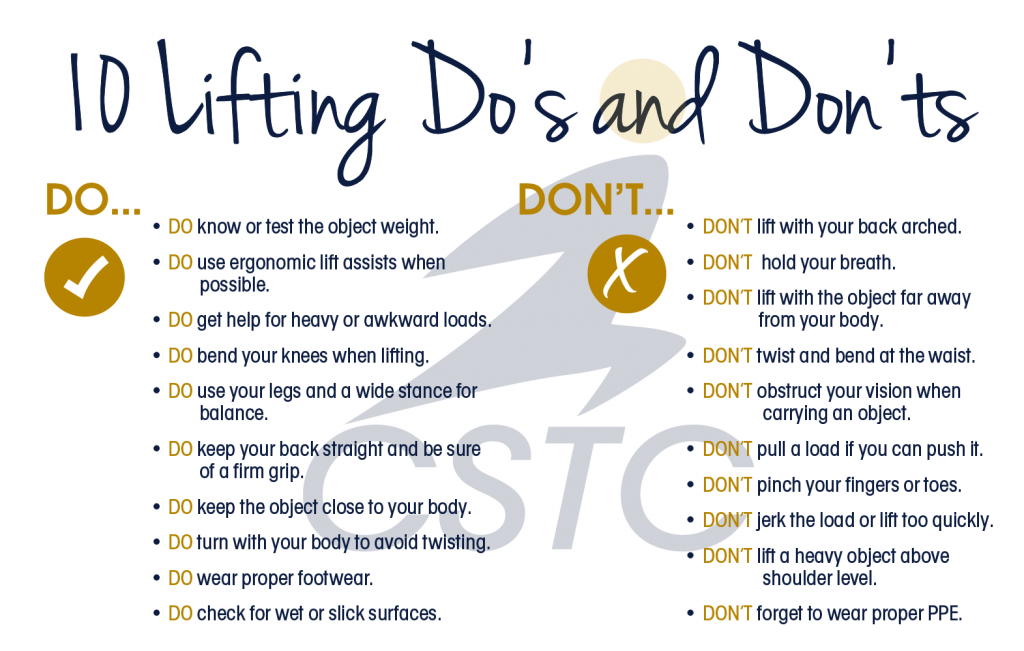Proper Lifting Techniques – Keeping Your Back Healthy
You’ve probably heard someone mention the importance of proper lifting techniques at some point in time. But what does this mean exactly? If you have ever talked to someone with chronic back pain, they will tell you the importance of keeping your back healthy.
First, you should avoid lifting heavy objects when possible.
Use mechanical lifting equipment whenever available. Try to push or roll the object instead of lifting it.
If this is not possible, one of the first things you should do BEFORE you lift is to plan ahead.
- Know what you are lifting and how you will lift it.
- Plan the route you are taking and clear a path if needed. Check for wet or slick surfaces and remove tripping hazards.
- Be aware of the weight of the object. Get help from someone if not safe to lift on your own.
Safety First – Warm-up and Stretch
Even the industrial athlete needs to warm up. By warming up your back and legs before performing a lifting task you can reduce risk of injury. This should be done whether you are lifting one object or performing multiple lifts for an extended time. You can prepare your body with these simple stretches:
- Standing Low Back Rotation Stretch: Begin standing in an upright position with your arms crossed over your chest. Slowly rotate your body to one side until you feel a gentle stretch in your back. Hold briefly than repeat to the other side. Do not arch your back and move your head and your trunk at the same time.
- Standing Hamstring Stretch: Begin standing upright with your heel placed in front of you on a step and your hands resting on your hips. Slowly bend forward at your hips until you feel a gentle stretch in the back of your thigh. Hold this position. Make sure to keep your back straight and maintain a slight bend in your stance leg. Avoid bouncing. Repeat with opposite leg.
The most important parts of proper lifting techniques are body mechanics and posture.
Poor body mechanics are often the cause of back pain and discomfort. The process of lifting places one of the greatest loads on the low back and therefore, has the highest risk of injury. Using proper lifting techniques is critical to preventing injury to your low back.

- Keep the load immediately in front of you. Get as close to the object as possible. Having the load too far away from your body can increase the chance for injuries to the shoulders, arms and back.
- Use a wide, staggered stance. Have one foot forward to put yourself in a position of power. This allows a more stable lift and gives you better balance.
- Prepare for the lift. Tighten your core muscles, keep your eyes forward and chin up. Maintain a neutral position with your back.
- Lift slowly and follow your head and shoulders. Keeping the load close, lift with your legs to a standing position. Breathe out as you lift. Use your feet to change direction, and avoid twisting to put unnecessary strain on your back.
- Use the same technique for lowering the object. Lowering the item is just as important as lifting it. Many people prepare for the lift, but relax when lowering the object, putting them at higher risk for injury.
These proper lifting techniques can reduce the strain on your back to help prevent injury. If you do injure your back while working you should tell your supervisor immediately, even a small injury has the potential to turn into a serious problem.
Remember, the best way to treat a back injury is by preventing it from occurring.
IMPORTANT STATS According to the Bureau of Labor Statistics (BLS):
• More than one million workers experience back injuries each year.
• ¼ of all workers compensation claims are a result of back injuries.
• Low back pain is one of the most common reasons that people miss work.
• 75% of back injuries occur while performing lifting tasks.
If you have questions for our Employee Health + Wellness team, please contact Scott Gels, OTR/L, Director of Employer Services at 419-678-5125, email us at wellness@cstcenter.com with any questions, or visit our website for more information.


